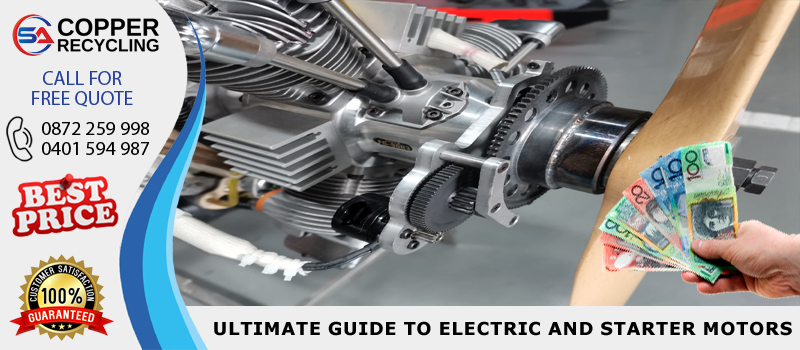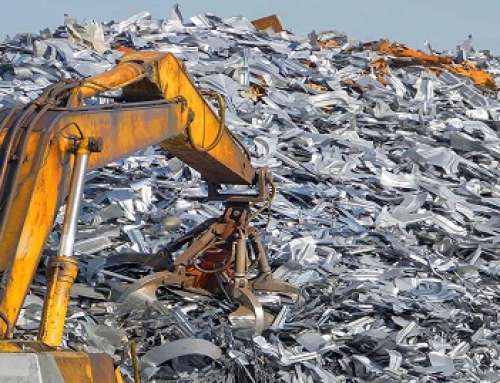In the world of automotive and mechanical engineering, electric and starter motors play pivotal roles. Understanding these components is crucial for both professionals & enthusiasts alike. This guide aims to demystify electric and starter motors. They provide comprehensive insights into their functions, types, maintenance tips, and common issues. This guide by Scrap copper buyer Adelaide offers everything you need to know about these essential motor types in Adelaide.
Understanding Electric Motors
Electric motors are at the heart of a wide range of appliances and vehicles. They convert electrical energy into mechanical energy, powering everything from household appliances to electric vehicles. There are various types of electric motors, including AC (Alternating Current) motors, DC (Direct Current) motors, brushless motors, and induction motors. Each type has its unique application, advantages, and limitations. DC motors are preferred in battery-powered or automotive applications for their speed control and high starting torque.
Starter Motors – The Ignition Catalyst
They are responsible for turning the engine over, allowing the combustion process to begin. Starter motors work by engaging with the engine’s flywheel, drawing power from the battery to create the necessary torque. The most common types of starter motors are the inertia starter and the pre-engaged starter. Inertia starters rely on the principle of inertia to engage with the flywheel.
Tips For Maintaining Electric And Starter Motors
Maintaining electric and starter motors is crucial for optimal vehicle performance. Regular inspections and upkeep, including cleaning, lubrication, and checking connections, ensure these components function efficiently.
1 – Maintenance Tips for Electric Motors:
- Regular Inspection and Cleaning: Dust and debris can lead to overheating in electric motors. Regularly inspect and clean the motor, focusing on removing dirt from the cooling fins and air vents.
- Lubrication: Adequate lubrication is vital for reducing friction in moving parts. Check the manufacturer’s guidelines for the appropriate lubricant type and schedule. Over-lubrication can be just as harmful as under-lubrication & so maintain the balance.
- Bearing Maintenance: Bearings are critical for smooth operation. Check for signs of wear or damage and replace bearings as needed.
- Monitor Temperature and Noise: Abnormal temperature rise or unusual noises can signal problems. Install temperature monitors and conduct regular sound checks to identify issues early.
- Check Electrical Connections: Loose connections can lead to motor failure. Regularly inspect all connections for tightness and signs of corrosion. Replace any worn or damaged wiring promptly.
2 – Maintenance Tips for Starter Motors:
- Battery Health: The starter motor relies on the battery. Regularly check the battery’s condition, ensuring it is fully charged, and the connections are clean and tight.
- Listen for Warning Sounds: Pay attention to the sounds your car makes when starting. Grinding or clicking noises can indicate starter motor issues.
- Solenoid Maintenance: The starter solenoid should be inspected for signs of wear or damage. A malfunctioning solenoid can prevent the starter motor from engaging.
- Inspect the Starter Motor: Look for physical damage, loose connections, or signs of burning. Ensure the mounting bolts are tight to avoid misalignment.
- Regular Testing: Periodically test the starter motor to ensure it is functioning correctly. This can be done using specialized testing equipment.
Common Issues
Even with proper maintenance, electric and starter motors can encounter issues. Common problems with electric motors include overheating, unusual noises, and a failure to start. These can be caused by overloading, poor ventilation, or electrical faults. Starter motor issues often manifest as clicking sounds without engine turnover, grinding noises, or intermittent engine starting problems.
Conclusion
Electric and starter motors are indispensable components in various mechanical and automotive applications. A clear understanding of their functions, types, and maintenance requirements is essential. they ensure their optimal performance and longevity. By recognizing common issues and knowing how to address them, you can provide these motors to continue to serve their purpose effectively.





